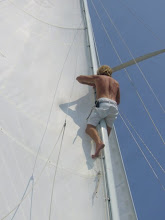A September 2008 document addressing Russian Arctic policy until 2020 makes it clear that Russia, unlike the United States and Canada, has no qualms devoting economic as well as political resources to the development of the Arctic. Russia views the Arctic as a significant vessel for mineral and oil revenue. Russia has invested in an icebreaker fleet with which it has attempted to monetize transport through the Northern Sea Route, requiring all vessels to be accompanied by a Russian icebreaker for a fee. The Russian government also has a significant personal stake in the Arctic: the Kremlin owns the largest Russian shipping company and through the 2006 expropriation of Yukos has created the largest oil company in the country. Much of Russian shipbuilding has been nationalized under the United Shipbuilding Corporation. The United Shipbuilding Corporation has helped to build Russia's icebreaker fleet, the largest and most technologically advanced in the world with the world's only seven nuclear-powered icebreakers, as well as new Russian ice-reinforced tankers designed for Arctic transport. In the wake of the worldwide financial crisis, Russia's dominant strategy and position in the Arctic could help it gain significant financial and political leverage in the coming years while also providing the foundation for a new wave of economic growth in the country.
Russia has simultaneously projected an increased presence in the Arctic and expressed an interest in acting cooperatively within the region. Putin has resumed Cold War-era Arctic bomber overflights, particularly near Alaska, and Russia's nuclear icebreakers are designed to be outfitted with gun turrets if needed. While the Russians claim that their increased force projection in the region is aimed primarily at terrorism, smuggling, illegal immigration and protection of the marine environment, the increased Russian Arctic presence raises significant concerns for any nation that fears a resurgent and unbalanced Russia. Indeed, Russian officials have publicly stated that the battle over Arctic resources could well become the tipping point for world military power in the coming decades.
The main challenges for Russia in the Arctic principally involve the maintenance and development of its Arctic infrastructure, effective control of the Northern Sea Route and the approval of its submissions for an extension of its continental shelf to the North Pole. Russia's icebreaker fleet is aging: after the launch of the NS Yamal in 1993, Russia did not launch another nuclear icebreaker until the 2007 launch of NS 50 LET Pobedy (50 Years of Victory). Retrofits will extend the thirty-year lifetime of some of Russia's Arctic nuclear fleet, but with a lead time of ten years on icebreaker builds the Russian icebreaker fleet will inevitably shrink before any expansion takes place again. Still, Russia is the only country in possession of a nuclear-powered icebreaker and has most powerful icebreaker in the world, the 524-foot 50 LET Pobedy which is capable of breaking through ice up to 2.8 meters thick.
To update Russia’s icebreaking fleet, Vladimir Putin is working directly with Sergey Kiriyenko of Rosatom, the Russian nuclear company responsible for the country's nuclear icebreakers. Russia plans to develop three new nuclear class icebreakers by 2020 in addition to one lead icebreaker, seven diesel-electric and four port-supporting icebreakers. This will add to Russia's total icebreaker fleet of forty vessels and ensure the fleet's operational capacity beyond 2020. State as well as private Russian interests have also invested in new Arctic-class tankers to operate on the Northern Sea Route. Russia also needs to invest in the maintenance of Arctic ports neglected during the 1990s and the development of new ports that allow Russia to more effectively enforce environmental and shipping regulations along the Northern Sea Route. Building new icebreakers and ice-reinforced tankers will preserve and reinforce Russia's capacity to operate in the Arctic. Within the next few years, Russia also hopes that the United Nations Commission on the Limits of the Continental Shelf will approve Russian claims to the eastern portion of the Lomonosov Ridge, an underwater mountain chain extending from northern Russia to Greenland, as an extension of the Siberian continental shelf. Access to this additional 465,000 square miles of Arctic territory—approximately equivalent to the size of California—including the geographic North Pole would provide Russia, already the world's largest natural gas provider, with an even larger natural resource base to tap. Given that most Arctic natural gas lies in Russian territory and that Donald Gautier of the US Geological Survey estimates that most Arctic natural gas and oil reserves are located at depths of less than five hundred meters of water, making them recoverable with current technology, the payoff for Russia could be huge – in the trillions of dollars.
03 October 2010
Subscribe to:
Post Comments (Atom)




No comments:
Post a Comment